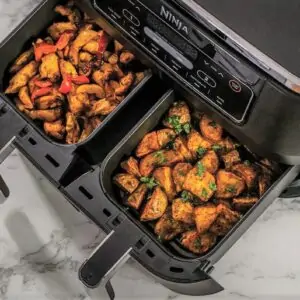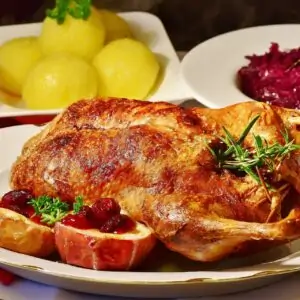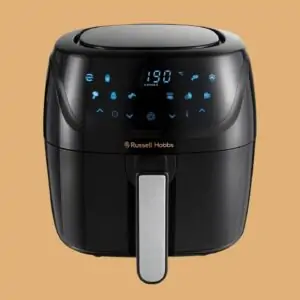Imagine a world where you can enjoy your favourite fried foods without the guilt of consuming unhealthy amounts of oil. This dream has become a reality thanks to the invention of the air fryer. In this post, we will explore “the history of the air fryer and the evolution of air frying”, a fascinating journey of this innovative kitchen appliance and how it has revolutionized home cooking by providing a healthier, more convenient, and versatile cooking option.
JUMP TO:
- Key Takeaways
- The Origins Of Air Frying
- Birth Of The Modern Air Fryer
- The Evolution Of Air Fryers
- Air Fryers vV. Traditional Deep Frying
- The Impact Of Air Fryers On Home Cooking
- Future Innovations in Air Frying Technology
- Air Fryers We Have Reviewed Recently…
- History Of The Air Fryer: Summary
- Frequently Asked Questions
Key Takeaways
- Air fryers have revolutionized home cooking with healthier, easier and more versatile options.
- The modern air fryer was invented in 2010 through a partnership between Fred van der Weij and Philips.
- Air Fryers offer numerous health benefits while providing convenient and speedy solutions for busy households.
The Origins Of Air Frying
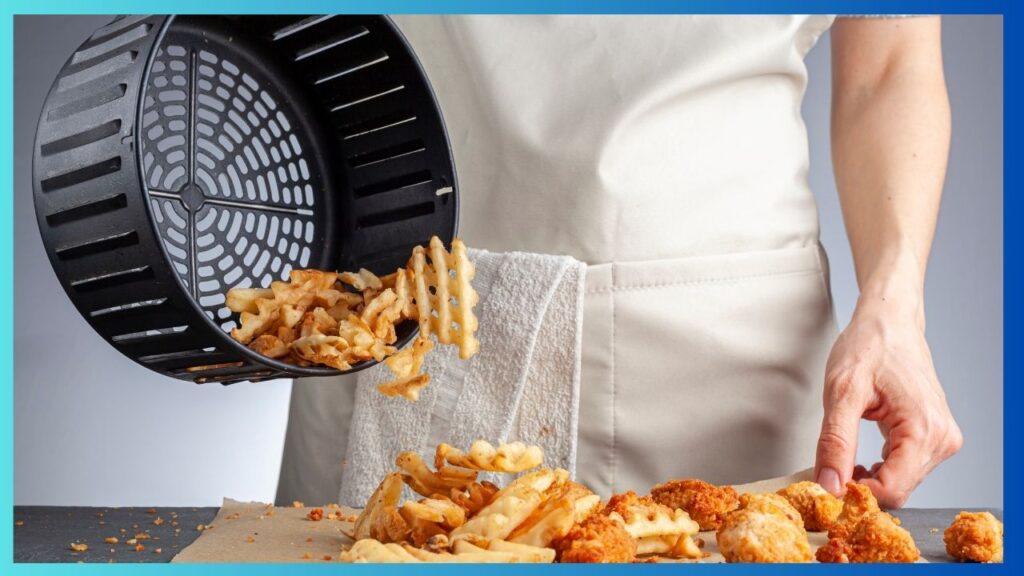
Early concepts of air frying emerged in the 1900s, well before the modern air fryer became a staple in kitchens. However, these ideas were limited in their capabilities and faced challenges, such as longer cooking times and limited cooking capacity. It wasn’t until the early 2000s that air fryers gained popularity and overcame these limitations, marking a significant milestone in the history of air frying technology.
It wasn’t until the invention of William L. Maxson’s Whirlwind Oven that the concept of air frying started to take shape.
Early 1900s Concepts
Visionaries such as William L. Maxson and Fred van der Weij initiated the exploration of air frying possibilities as early as the 1900s, when the air fryer invented by Maxson, called the Whirlwind Oven, was patented in 1945. This first air fryer aimed to provide an alternative to traditional deep frying methods.
On the other hand, van der Weij was inspired by a fat-free fryer he had purchased from a television commercial. Despite their early innovations, these initial concepts faced numerous drawbacks, such as bulky designs, difficult cleaning processes, and parts too large for standard dishwashers.
William L. Maxson And The Whirlwind Oven
William L. Maxson’s Whirlwind Oven, a groundbreaking invention, used a fan to distribute hot air, ensuring consistent cooking. Designed to reheat frozen meals for American service members during World War II, the Whirlwind Oven was the first patented air fryer.
However, the rise of microwave ovens in the mid-twentieth century overshadowed the Whirlwind Oven due to their convenience and faster cooking times.
Birth Of The Modern Air Fryer
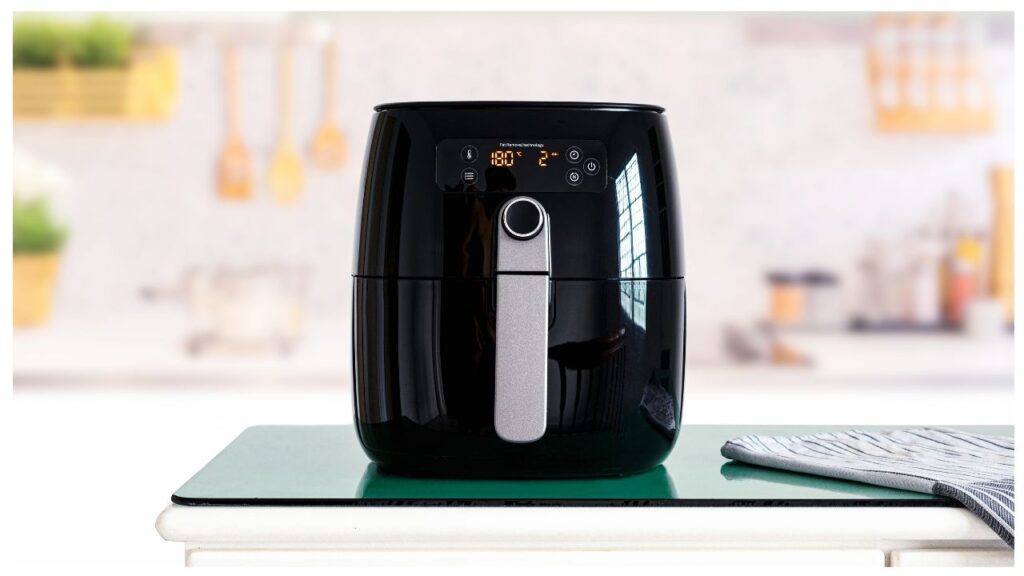
A man named Fred van der Weij, a Dutch mechanical engineer, was the mastermind behind today’s modern air fryer design. He envisioned a healthier and more convenient cooking method, leading to the invention of the modern air fryer.
Van der Weij’s vision came to life through a partnership with Philips, a renowned electronics company. In 2010, Philips released the first personal air fryer, featuring rapid air technology that allowed for healthier cooking by using hot air instead of oil.
Fred Van Der Weij And His Vision
Fred van der Weij was resolute in his mission to create a cooking appliance capable of producing crispy french fries and chicken wings while using minimal oil. This ambition led to the invention of the modern air fryer, a game-changing device that allows users to enjoy their favourite fried foods without the guilt of consuming excessive amounts of oil.
Van der Weij’s air fryer became a reality through his collaboration with Philips, which played a crucial role in developing and popularising the appliance.
Philips’ Role In Air Fryer Development
Philips, a pioneering air fryer manufacturer, played a significant role in introducing the Philips air fryer to a broad market. The company introduced rapid air technology, which enabled healthy frying by circulating hot air around the food, resulting in a crispy texture without the need for large amounts of oil.
Philips’ marketing strategies were also key in raising consumer awareness and making the air fryer popular among health-conscious consumers.
The Evolution Of Air Fryers
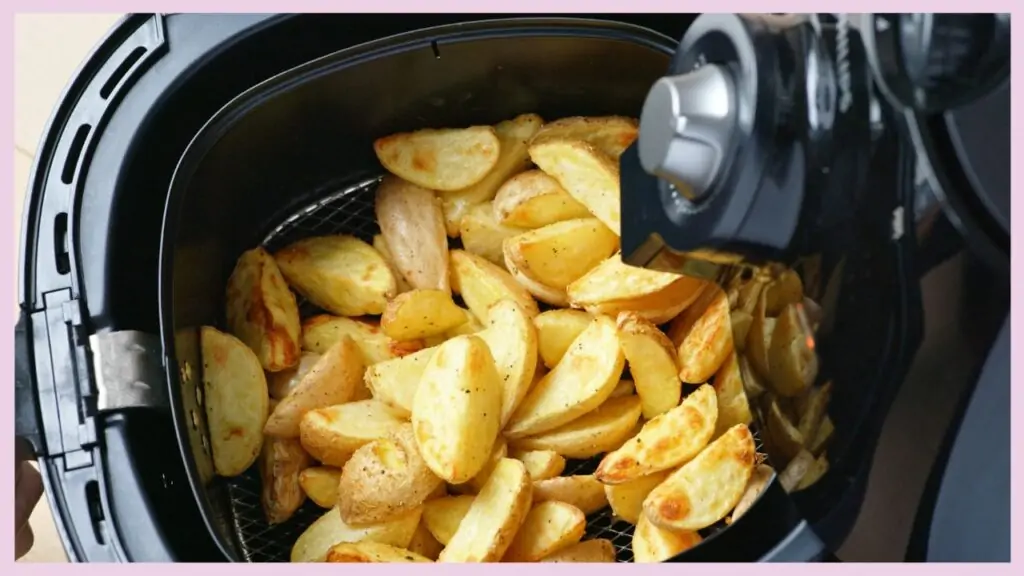
Air fryers have significantly evolved over the years, exhibiting design, functionality, and efficiency enhancements. No longer limited to basic frying, air fryers have become more user-friendly and versatile, with many models now boasting digital controls, pre-set cooking programs, and improved heating elements.
The growing popularity of air fryers, including commercial air fryer models, among home cooks and professional chefs alike has led to the development of models with enhanced safety features and energy-saving technology.
Design Enhancements
Improved air fryer designs have increased their appeal and ease of use. Digital displays now offer intuitive and user-friendly controls, making it simple for users to select the desired cooking time and temperature for their dishes.
Additionally, air fryers come equipped with pre-programmed recipes that cater to a wide range of dishes, making it easy for users to experiment with different recipes and cook a variety of foods using one appliance.
Improved Functionality
Air fryers have significantly advanced in functionality, now offering versatile cooking options, including:
- Baking
- Grilling
- Roasting
- Dehydrating
This increased versatility enables users to prepare a wide range of dishes in one convenient appliance, making the air fryer a valuable addition to any kitchen.
Moreover, integrating advanced cooking technologies in countertop convection ovens, such as forced convection, ensures that food is cooked evenly and quickly, resulting in delicious, crispy textures without excessive hot oil. This makes it easier than ever to cook food more healthily.
Enhanced Efficiency
Beyond enhancements in design and functionality, air fryers have also evolved to be more energy-efficient and safer to use. Many modern air fryers have built-in safety mechanisms such as automatic shut-off and cool-touch handles, reducing the risk of accidents and burns.
Furthermore, the compact size of air fryers compared to traditional deep fryers makes them easier to handle and store, providing an appealing alternative for home cooks who want a convenient and healthier cooking option.
Air Fryers vV. Traditional Deep Frying
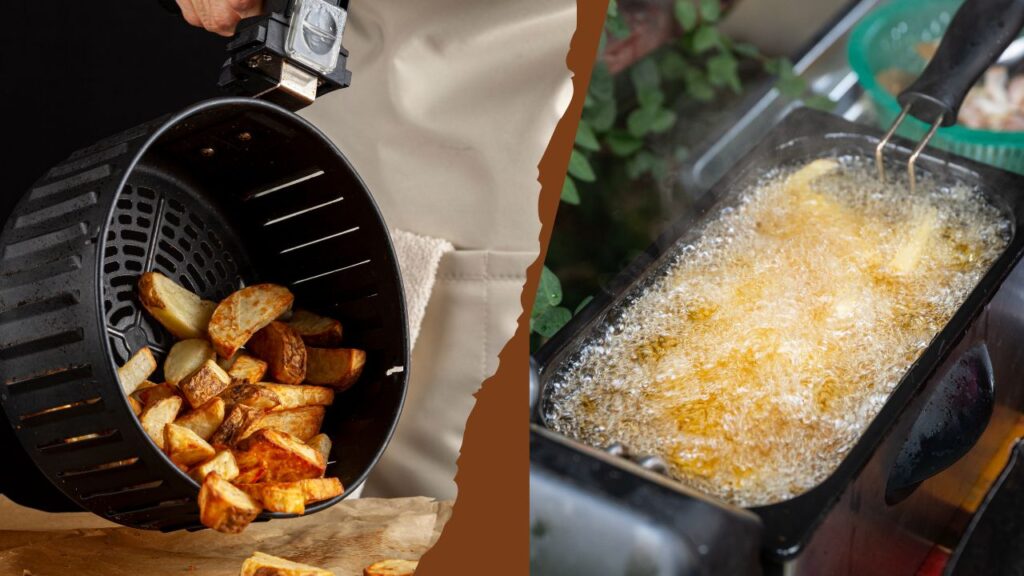
The advent of the air fryer has dramatically changed our cooking methods, rendering significant benefits over traditional deep frying techniques. Health-conscious individuals and busy households have embraced the air fryer as their go-to kitchen appliance for delicious, guilt-free meals.
In this section, we will explore the key differences between air fryers and traditional deep frying, focusing on the health benefits and convenience of air frying.
Health Benefits
The ability of air fryers to use less oil than deep frying, thereby reducing calorie and fat intake, is one of their most significant advantages. Research indicates that air frying can reduce calorie intake by approximately 70% – 80% compared to traditional frying methods.
Moreover, air frying is generally considered more beneficial for heart health, as it can decrease the amount of fat, calories, and potentially detrimental compounds in food.
Convenience and Speed
Offering convenience and speed, air fryers are ideal for busy households and individuals with limited kitchen time. The hot air circulation in an air fryer enables quicker cooking, resulting in a more efficient cooking process than traditional methods.
Furthermore, air frying requires less preheating time than conventional ovens, reducing overall meal preparation time.
The Impact Of Air Fryers On Home Cooking
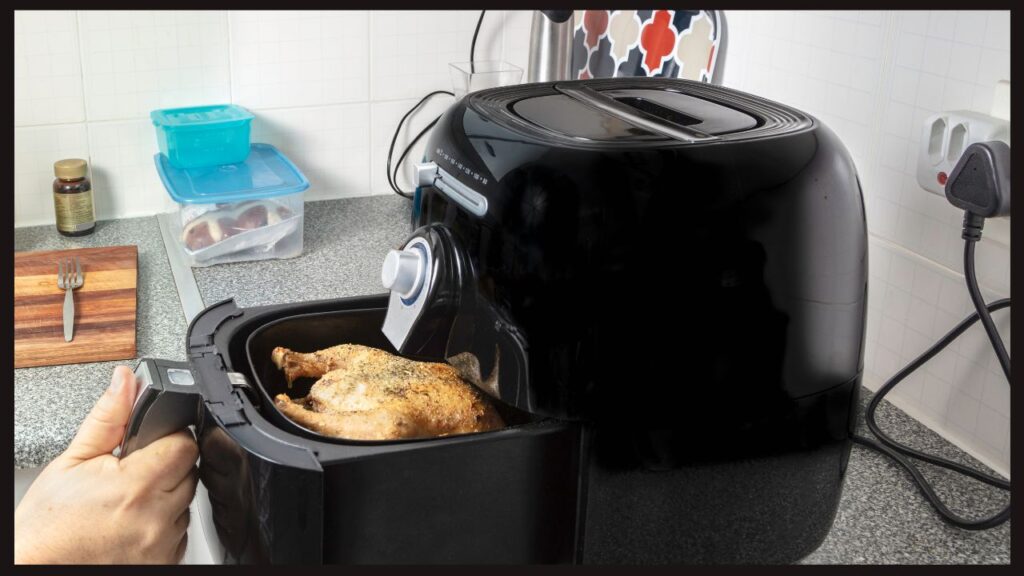
Air fryers, which rose in popularity during the pandemic, have profoundly impacted home cooking by offering a healthier, more convenient, and versatile cooking option. With their improved design, functionality, and efficiency, air fryers have become a staple in many kitchens, allowing users to experiment with new recipes and cook a variety of dishes with minimal effort.
Moreover, air fryers are much healthier than traditional deep fryers, as they require less oil and produce fewer unhealthy byproducts, making them a favourite among health-conscious consumers.
Future Innovations in Air Frying Technology
The ongoing popularity of air fryers sparks excitement about future innovations that could further enhance this already revolutionary appliance. Potential advancements in air frying technology may include:
The use of better materials
The development of gas-powered air fryers
Increased versatility in cooking options
Integration with smart home systems
With each innovation, the air fryer will continue transforming how we cook and enjoy our favourite foods.
Air Fryers We Have Reviewed Recently…
Instant Vortex Digital Single Drawer Air Fryer
Instant Vortex Plus Dual Basket Air Fryer
Russell Hobbs 27160 Satisfy Air Fryer
Daewoo Digital Air Fryer Oven
Daewoo Digital Double Drawer Air Fryer Review
History Of The Air Fryer: Summary
The air fryer has come a long way since its early beginnings in the 1900s. From William L. Maxson’s Whirlwind Oven to Fred van der Weij’s modern air fryer, the evolution of this innovative appliance has significantly impacted home cooking, offering a healthier, more convenient, and versatile option for preparing our favourite dishes. As we look forward to future innovations in air frying technology, it’s clear that the air fryer will continue to play a crucial role in revolutionising how we cook and enjoy food.
Frequently Asked Questions
What Is The History Of Air Frying?
The air fryer was born in 2005 when Fred van der Weij, an inventor in the Netherlands, experimented with a way to make crisp chips without deep-frying. Groupe SEB then introduced the world’s first air fryer in 2006, and Philips unveiled their Airfryer convection oven in 2010 at the IFA Berlin consumer electronics fair. This marked the beginning of a revolution in healthy cooking.
When Was The First Air Fryer Invented?
The air fryer was born in 2005 when Fred van der Weij, an inventor in the Netherlands, experimented with a way to make crisp chips without deep-frying. Groupe SEB then introduced the world’s first air fryer in 2006, and Philips unveiled their Airfryer convection oven in 2010 at the IFA Berlin consumer electronics fair. This marked the beginning of a revolution in healthy cooking.
How Did Air Fryers Become Popular?
The air fryer’s ability to quickly cook food evenly using little fat, combined with the rise in people cooking from home due to the pandemic, has made it a billion-dollar business and an incredibly popular kitchen appliance.
What Is The Introduction Of Air Fryer?
Introduced by Groupe SEB in 2006 and Philips Electronics in 2010, the air fryer is a countertop appliance designed to simulate deep frying without submerging the food in oil. It cooks quickly and evenly with minimal oil, resulting in browned, crispy food on the outside but remaining moist and tender on the inside. Cleanup is also much easier than with traditional deep frying methods.
What Was The First Air Fryer?
The first air fryer was the Whirlwind Oven, invented by William L. Maxson back in 1945.

